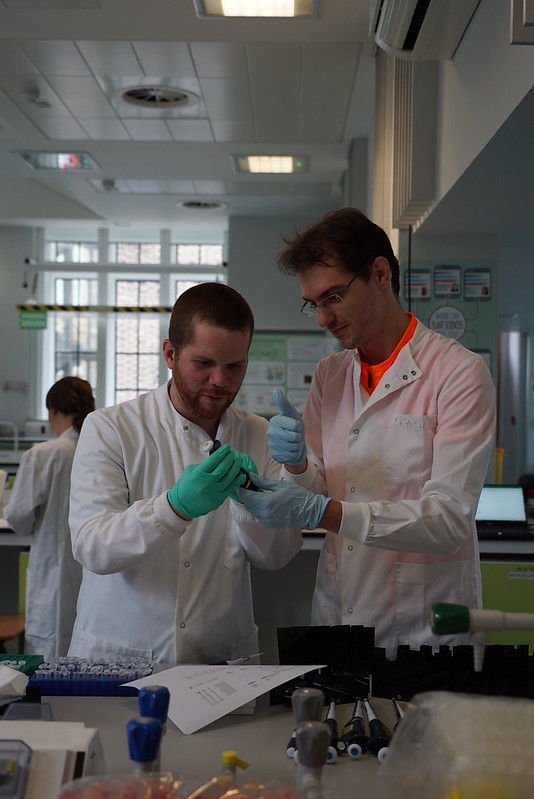Aaron Swartz Updated 2025-07-16
Aaron, Ciro Santilli will complete your quest to make eduction free. Just legally this time, with the and with the Creative Commons license you helped to create.
Ciro likes how The Internet's Own Boy (2014) explains how Aaron felt like high school was bullshit, and that he could learn whatever he wanted from books, which is one of Ciro's key feelings.
Ciro Santilli Updated 2025-07-16
Quick facts:
- Nationalities: Italian and Brazilian
- Grew up in: Brazil
- Relationship status 2017-: married
- Given name pronunciation: take your pick from Ciro Santilli's given name
- Chinese name: 三西猴, means "three western monkeys". Phonetic approximation to SANtilli CIRO. More info at: Ciro Santilli's Chinese name. Semi-unintentionally reminds Chinese people of Sun Wukong (孙悟空). This association is further slightly strengthened by the phonetic choice of 三 San, which Ciro later noticed matches the middle character of Tang Sanzang (唐三藏), the monk in Journey to the West. The given name 西猴 was given by Ciro Santilli's wife, then recent girlfriend, as a semi-joke, and he took it up because the best way to take a joke is to play along with the joker. 三 was chosen by Ciro himself.
- laptop: high end Lenovo ThinkPad
- distro: latest Ubuntu release
- Vim or Emacs: vi/vim. But for The Love, will someone please make an open source C++ integrated development environment that actually just works?
- tabs or spaces: spaces
- Mailing list or Git(Hub|Lab): Git(Hub|Lab), with passion, see Section "Mailing list"
- system or unit tests: system
- programming languages: Python and C++. He'll learn Rust and Haskell once he's rich. As of the 2020s, Rust was picking up some serious steam, so Ciro might end up eating his own words there.
- musical instruments to listen: Chinese Guqin and electric Jazz-fusion guitar
- metric or imperial: metric, for The Love. Science? Standardization? 21st century anyone?
- QWERTY or Dvorak: QWERTY, alas
- birth name: Ciro Duran Santilli
Other people with the same name are listed at Section "Ciro Santilli's homonyms".
19th century illustration of the Journey to the West protagonist Sun Wukong
. Source. Sun Wukong (孙悟空) is a playful and obscenely powerful monkey Journey to the West. He protects Buddhist monk Tang Sanzang, and likes eating fruit, just like Ciro. Oh, and Goku from Dragon Ball is based on him. His japanese name is "Sun Wukong" (same Chinese characters with different Japanese pronunciation) for the love. His given name "Wukong" means literally "the one who mastered the void", which is clearly a Dharma name and fucking awesome in multiple ways. This is another sad instance of a Chinese thing better known in the West as Japanese.
It is worth noting however that although Wukong is extremely charming, Ciro's favorite novel of the Four Great Classic Novels is Water Margin. Journey to the West is just a monster of the week for kids, but Water Margin is a fight for justice saga. Sorry Wukong!
Ciro Santilli playing with a pipette at the University of Cambridge circa 2017
. The photo was taken in an open event organized by the awesome Cambridge Synthetic Biology outreach group, more or less the same people who organize: www.meetup.com/Cambridge-Synthetic-Biology-Meetup/ and who helped organize Section "How to use an Oxford Nanopore MinION to extract DNA from river water and determine which bacteria live in it".
Taking part in such activities is what Ciro tries to do to overcome his lifelong regret of not having done more experimental stuff at university. Would he have had the patience to handle all the bullshit of the physical word without going back to the informational sciences? Maybe, maybe not. But now he will probably never know?!
Notice the orange high visibility cycling jersey under the lab coat, from someone who had just ridden in from work as fast as possible as part of his "lunch break". It is more fun when it is hard.
Scribe Jean Miélot, 15th century
. Ciro Santilli fantasizes that he would have make a good scribe in the middle ages, partly due to his self diagnosed graphomania, but also appreciation for foreign languages, and his mild obsession with the natural sciences.
OurBigBook.com is Ciro's view of a modern day scriptorium, except that now the illuminations are YouTube videos.
Chill and eat your bread in peace comes to mind. A scribe, in a library, reading and writing the entire day in peace and quiet. The life!
The job of a Internet-age scribe is basically that of making knowledge more open, legally extracting it from closed copyrighted sources, and explaining your understanding of it to the wider world under Creative Commons licenses on the web. And in the process of greater openness, given a well organized system, we are able combine the knowledge of many different people, and thus make things more understandable than any single/few creator closed source source could ever achieve.
Ciro Santilli waving hello in infrared.
More info at: Figure "Ciro Santilli waving hello in infrared". Free and open-source software Updated 2025-07-16
A more precise term for those in the know: open source software that also has a liberal license, for some definition of liberal.
Ciro Santilli defines liberal as: "can be commercialized without paying anything back" (but possibly subject to other restrictions).
He therefore does not consider Creative Commons licenses with NC to be FOSS.
For the newbs, the term open source software is good enough, since most open source software is also FOSS.
Most British universities are registered as charities Created 2024-08-27 Updated 2025-07-16
No, they are basically not-for-profits, or more precisely in british legal terms, "charities". By taking government funding (directly or indirectly through subsiding enrolment fees?), they have to follow some government rules, and all major ones do it seems: academia.stackexchange.com/questions/49187/in-what-sense-are-uk-universities-public/49188
In the University of Cambridge for example, all MA degree holders or higher appear to have some voting power: www.cam.ac.uk/about-the-university/how-the-university-and-colleges-work/governance (archive)
This adds an extra layer of difficulty for the average taxpayer to make changes to university policy, e.g. making universities publish all material with Creative Commons licenses. At most, voters could require this indirectly through the government funding requisites. It is a mess.
Not even the Open University seems to be very open!
Ciro Santilli once attended a round table in the early 2020s where a University of Oxford official from the IP licensing department. The University of Oxford took a 20% equity on spin-off companies, not an uncommon University IP ownership policy at the time. At one point, the officer clearly justified this along the following very official sounding lines (paraphrased):While noble sounding, this immediately reminded Ciro of instrumental convergence, in the field of AGI philosophy. Or in other words, of course the best approach to maximize education and research outcomes of society is to first take over the world, and then implement those goals from there! See also Why Not Just: Think of AGI Like a Corporation? by Robert Miles (2018)
The university is a charity with the goal of promoting education and research. All money obtained is reinvested in furthering education and research.
Notably, the University of Oxford was extremely protective of its learning material at that time, which was highly paywalled behind university logins, presumably with the rationale of having unique learning materials to enroll more paying undergrads. How can giving out free information to all not be the optimal way to "promoting education and research" is very hard to envision.
Bibliography:
- www.hepi.ac.uk/2023/06/07/most-universities-are-charities-so-what/ Most universities are charities: so what? by Mary Synge (2023) on the
xkcd Updated 2025-07-16
Being able to quote the right one at the right time is considered a fundamental shibboleth of the profession.
And with reason.
YouTube Updated 2025-07-16
Ciro Santilli publishes videos of this not-so-common visual programming experiments on his YouTube channel occasionally: www.youtube.com/c/CiroSantilli. Ciro should however not be lazy and also upload each video produced to Wikimedia Commons, since YouTube does not offer a download option even for videos marked with a Creative Commons license: www.quora.com/Can-I-download-Creative-Commons-licensed-YouTube-videos-to-edit-them-and-use-them/answer/Tarmo-Toikkanen!
This is also where Ciro's downtime converged to in his early 30's, since he long lost patience for stupid video games and television series.
Ciro developed one interesting technique: while scrolling through YouTube's useless recommendations, when he understands what a channel is about, he either immediately:and no matter how much you say you don't want to hear about them, YouTube juts keeps on sending more.
This helps to keep this feed clean of boring stuff he already knows about. There is unfortunately an infinite amount of useless videos out there however on the topics of:
- sports
- music, mostly idiotic top of the charts
- news and political commentary
- food
- programming tutorials. Meh, got Stack Overflow.
- stuff that is not in English, and notably languages that Ciro does not even speak!
- motorcycles
- ASMR
- cute animals
- gaming and movie commentary. Ciro is interested only in a very specific number of video games
- nature life, e.g. hiking, cycling, or living in isolation, this Ciro enjoys
- science for kids (popular science)
Things Ciro hates about YouTube:
Likely FFmpeg is the backend of YouTube.
Bought by Google in 2006.




